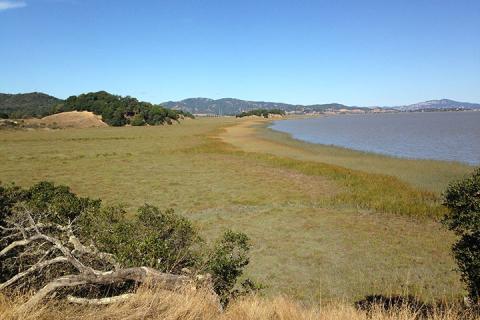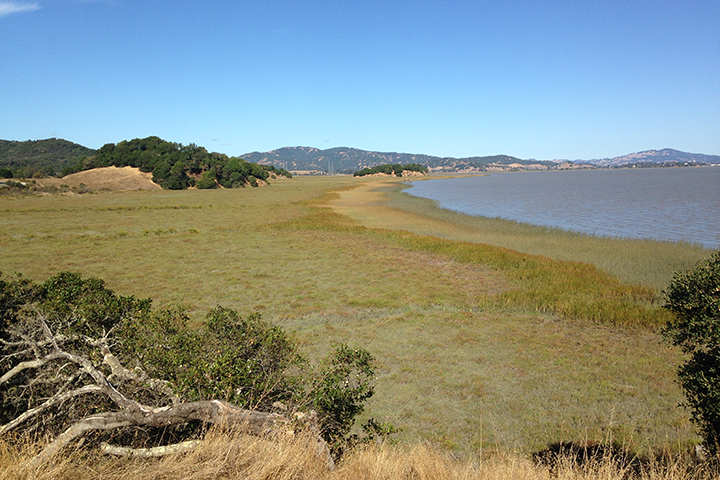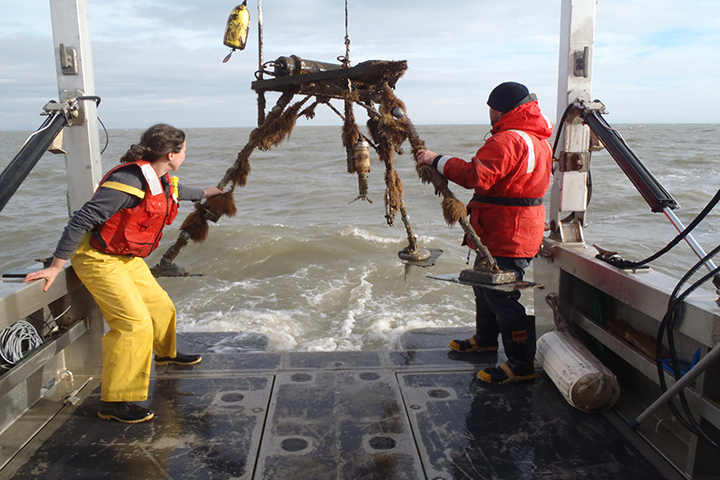
Natural resource managers, policy makers and regulators, restoration planners and practitioners, and consulting scientists came together to translate research on regional sediment dynamics into an accessible publication.
The Project
This project distilled and conveyed relevant lessons learned from a series of past research within and adjacent to a tidal salt marsh in the San Francisco Bay National Estuarine Research Reserve. Motivation for the project stemmed from a long history of regional reports, workshops, working groups, and conversations around best practices for sediment management in the estuary that collectively highlighted the need for greater understanding of how and when sediment is transported from the bay onto marshes.
Tidal marsh resilience in San Francisco Bay is threatened by sea-level rise and a downward trend in the available sediment in the estuary. Reduced marsh sediment accretion increases the likelihood of marsh vegetation drowning, widespread habitat loss, and a reduction in shoreline protection and other ecosystem services. People charged with addressing such challenges include natural resource managers, policy makers and regulators, restoration planners and practitioners, and consulting scientists. Large-scale restoration efforts are planned for the estuary, and these decision makers must consider sediment movement when they plan and implement management actions to enhance and restore tidal marsh habitat.
The project team worked with these decision makers using a deliberate collaborative process involving surveys, interactive workshops, and iterative document review and revision to improve understanding of key principles and past research. Over the course of the project, the team synthesized and translated technical data on hydrodynamics, sediment transport, and sediment accretion into an approachable and understandable communication product that will be freely accessible to regional collaborators and additional users around the San Francisco Bay area and beyond.
This project continues a collaborative effort that started with the 2013 research project "Mud on the Move," focusing on data from a set of connected field studies based in San Francisco Bay NERR's China Camp State Park and the adjacent waters of San Pablo Bay.
The Impact
- Regional collaborators gained enhanced awareness of contemporary research on sediment dynamics and the specific processes at work in the San Francisco Bay NERR, thanks in part to workshop presentations designed to orient participants to the project, the area, and the research. Presentations and discussions during the workshops highlighted widespread support to broaden the scope of the research beyond China Camp State Park.
- In addition to attending workshop presentations, participants also provided feedback and clear recommendations on how to tailor messaging to reach the intended management audience. The resulting publication reflects the regional collaborators’ consensus around a preferred style for communicating about the scientific content, including simple diagrams, the use of common language, a glossary of technical terms, and an easily accessible medium.
- Thoughtful workshop planning and responsiveness to participant feedback created an environment that fostered open and robust conversations among participants. The workshops provided opportunities to focus on the marsh-sediment science, revealed possibilities for future collaboration, and yielded detailed feedback that directly informed the final products.

